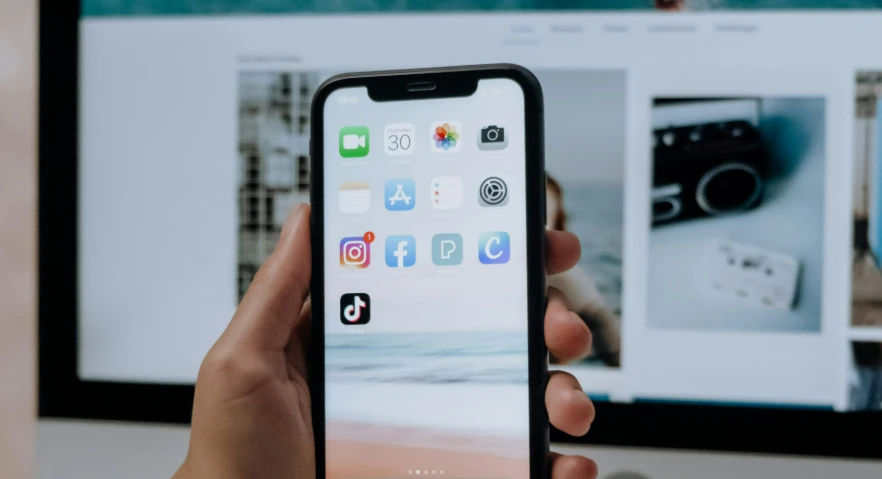Influencer marketing has evolved from a creative experiment into a measurable and data-driven marketing channel. But as the industry matures, managing campaigns through spreadsheets or manual outreach is no longer enough.
Brands need dedicated platforms to streamline discovery, communication, content management, and reporting — all in one place.
However, the number of tools available today can be overwhelming. From small influencer databases to AI-driven campaign managers, each promises to simplify your workflow. The challenge lies in identifying which platform fits your business goals, scale, and budget.
This guide breaks down the essential factors to consider when choosing the right influencer marketing platform for your brand, so you can make an informed decision that supports both efficiency and growth.

Understanding What an Influencer Marketing Platform Does
An influencer marketing platform is a software solution that helps brands manage end-to-end influencer campaigns — from discovery and outreach to collaboration and analytics.
Instead of searching for creators manually on social media, these platforms centralize data such as follower demographics, engagement rates, brand affinities, and past campaign performance. Many also automate parts of campaign management, like sending briefs, approving content, and tracking results.
At its core, the right platform should act as a command center for influencer operations, saving time while ensuring every decision is backed by reliable data.
1. Define Your Goals Before Comparing Platforms
Before exploring tools, it’s crucial to define what you expect to achieve from influencer marketing.
Ask yourself:
- Are you trying to increase brand awareness, drive sales, or build long-term partnerships?
- Do you need to find new creators, manage relationships, or analyze performance?
- How large is your campaign pipeline — a few creators per month or global influencer programs?
Different goals require different toolsets. A small business may prioritize discovery and outreach, while enterprise brands may need advanced analytics and CRM-like features.
Knowing your objectives will help you identify must-have features versus nice-to-have extras.
2. Evaluate the Quality of Influencer Discovery
The foundation of every platform is its influencer database. High-quality discovery tools should let you filter creators by:
- Niche and content category (beauty, tech, travel, etc.)
- Audience demographics (age, gender, location, interests)
- Engagement rate and authenticity metrics
- Platform presence (Instagram, TikTok, YouTube, etc.)
Some platforms also use AI to analyze tone, style, and past performance — helping you identify creators who align with your brand voice.
Be cautious of platforms that boast about large databases without clear quality controls. A smaller but vetted network often leads to better results than millions of unverified profiles.
3. Assess Campaign Management and Collaboration Features
Once you’ve found the right influencers, managing them efficiently is the next challenge. A strong influencer marketing platform should simplify communication and task tracking through:
- Automated campaign briefs and approvals
- Content review and feedback tools
- Integrated messaging or email sync
- Deadline and deliverable tracking
These features are especially valuable when running multiple campaigns simultaneously. They prevent miscommunication, missed deadlines, and manual errors that often occur with scattered workflows.
If you frequently collaborate with multiple teams — creative, legal, or analytics — ensure the platform supports role-based access or shared dashboards for better coordination.
4. Look for Transparent Reporting and Analytics
A good influencer campaign isn’t just about reach; it’s about results. The best platforms offer detailed analytics that go beyond vanity metrics like follower count.

Key insights to look for include:
- Engagement quality (likes-to-comments ratio, true engagement rate)
- Clicks and conversions from trackable links
- ROI measurement and cost-per-engagement data
- Comparison across campaigns and creators
Advanced tools also allow real-time tracking, so brands can adjust strategies mid-campaign instead of waiting until the end.
Reporting transparency matters — you should always know where data comes from and how it’s calculated.
5. Consider Automation and AI Capabilities
Automation has become one of the biggest differentiators among influencer marketing platforms.
AI-driven tools can now:
- Generate personalized outreach messages
- Suggest ideal influencer matches based on previous success
- Auto-generate campaign briefs
- Predict engagement and conversion outcomes
These features save time and reduce human error, especially for teams managing multiple campaigns.
However, balance is key. Choose a platform where automation enhances creativity — not one that makes communication robotic or inflexible.
6. Analyze Pricing and Scalability
Influencer marketing platforms come with different pricing structures — monthly subscriptions, campaign-based fees, or usage-based models.
When comparing options, don’t just look at the base cost. Evaluate:
- The number of campaigns or creators allowed per plan
- Additional charges for analytics or API integrations
- Customer support and onboarding quality
For growing businesses, scalability is critical. Choose a tool that can grow with your brand instead of forcing you to migrate once your campaign volume increases.
7. Check Integration with Other Marketing Tools
Influencer campaigns rarely exist in isolation. Ideally, your platform should integrate with tools you already use — such as Google Analytics, Shopify, HubSpot, or Meta Ads Manager.
Integration ensures data consistency across channels and makes it easier to attribute influencer performance to broader marketing goals.
If your team runs paid media or affiliate campaigns, look for a platform that supports UTM tracking, custom links, or CRM synchronization.
8. Evaluate User Experience and Support
Ease of use can make or break your experience. Even the most advanced system won’t deliver results if your team struggles to navigate it.
Before committing, test the interface:
- Is the dashboard intuitive?
- How easy is it to filter influencers or generate reports?
- Does it require extensive onboarding or technical knowledge?
Customer support also matters — fast assistance and reliable documentation can save hours of troubleshooting during active campaigns.
9. Review Case Studies and User Feedback
Finally, look at how the platform performs for businesses similar to yours. Most reputable tools provide case studies, testimonials, or demo results.
Pay attention to outcomes that match your priorities — for instance, increased efficiency, better influencer selection, or measurable ROI improvements.
Third-party reviews or client success stories can give insight into how platforms handle real-world challenges like fraud detection, scaling, or complex campaign coordination.
Conclusion: A Data-Driven Decision for Long-Term Growth
Choosing the right influencer marketing platform is less about chasing trends and more about finding a system that supports your team’s workflow and business objectives.
Start with clarity on what success means for your brand — then evaluate tools that align with your operational needs, budget, and long-term strategy.
When the right platform is in place, influencer marketing becomes less of a manual process and more of an integrated, data-driven growth channel. It empowers teams to focus on creativity and partnerships while automation handles the heavy lifting behind the scenes.
Loading comments...


